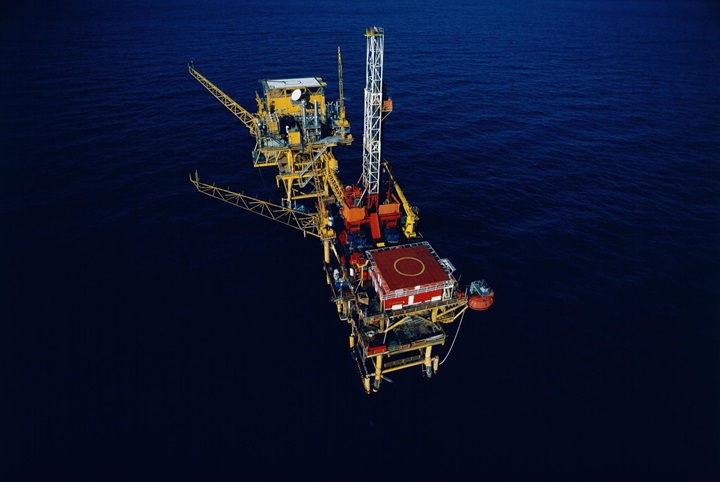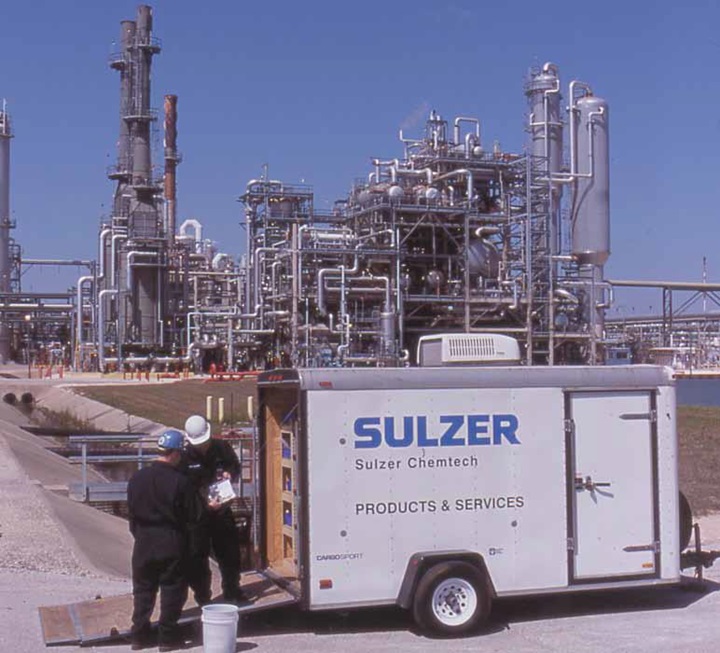Delivering mission impossible
Sulzer overhauls 31 pieces of large industrial equipment in just 35 days
A big project with a short deadline
“To deliver a project like this takes exceptional planning, teamwork, manpower and engineering capability.”
An IOC facility in Qatar had a large-scale planned improvement project that needed to be delivered to a tight deadline. In all, 31 items would need restoring to as-new condition, including 11 fans, 12 motors, 3 pumps, 3 compressors, a steam turbine and a turbo expander. The plant was to be shut down for 56 days in total, but some processes would take longer to wind down. Consequently, all work would need to be completed in just 35 days.
To deliver a project like this takes exceptional planning, teamwork, manpower and engineering capability. In fact, all resources and spare parts would need to be allocated and ready before the project began. With an additional 11’000 people on site during the outage, this was the only way to guarantee the multiple overhauls could be completed within the window of opportunity. To expect this from a single service provider seems impossible – but Sulzer was ready to deliver.
The IOC invited independent service providers to pitch for this challenging undertaking. As well as ensuring competitive submissions, it was important to ascertain who actually had the skills for the project. To pass the test, hopefuls underwent assessments and planning meetings to build confidence with the prospective customer.
Proven in oil and gas projects
“Sulzer provided a level of assurance to the IOC that competitors couldn’t hope to match.”
Sulzer had an advantage. As part of its expansive global network, the business had a close partnership with a well-equipped workshop in Qatar, which could provide responsive local support to the project. It wasn’t just any workshop either – it was experienced in maintaining equipment for the IOC. The local team was very familiar with the site and had easy access to the Sulzer’s complete global technical support structure.
Furthermore, Sulzer is a global expert in pumps and rotating equipment for the worldwide oil and gas industry, providing best-in-class solutions and services for onshore and offshore applications. Sulzer demonstrated this with a track record of successful oil and gas projects it had completed locally and further afield. Also of importance, Sulzer’s health and safety record was exemplary, which further impressed the customer.
The company’s proven skills and its local workshop provided a level of assurance to the IOC that competitors couldn’t hope to match. As a consequence, all rotating equipment maintenance during the outage was awarded to Sulzer.
A global team of experts
“Representatives from across Sulzer’s global network came together to deliver the project.”
Before work could begin, there was extensive planning, training and resource allocation to complete.
“The key to this type of project is careful planning and management. We have a vast resource of experienced technicians and engineers that work on this equipment daily. Sulzer’s personnel service all types of rotating equipment, irrespective of the manufacturer, and this was reflected in the audits that were conducted in preparation for the project,” Ian Clarke, Project Manager for Sulzer, elaborates.
Over 100 people were assembled to form Sulzer’s team for this undertaking. Representatives from across Sulzer’s global network came together to deliver the revamp project. With its company-wide culture of international collaboration, many of the key players had worked together already. For example, steam turbine maintenance was actively supported by Sulzer’s expert service center in Indonesia. In short, geography was no barrier and everyone brought laser-like focus along with their unique capabilities to the project.
It was vitally important for the IOC that everyone on the project had the highest levels of ingenuity, engineering skill and experience with the equipment. With so many items requiring preventative maintenance, even with the best planning in the world, unforeseen challenges were going to pop up. Sulzer ensured that the team was equipped to quickly deal with the unexpected, so even if an unanticipated challenge presented itself, it could be resolved quickly.
Planning makes perfect
“In total, 192 process control procedures were created for the project.”
Well in advance of arriving at the customer site, Sulzer had submitted a list of required parts for the overhauls from the IOC’s inventory. This selection contained 5’283 spares and 1’247 line items, which were checked by Sulzer engineers ahead of time to ensure they were fit for purpose.
So that everyone knew what to do in their specific area, comprehensive work maps were produced for all equipment. These detailed every step of the maintenance process, and what to do in every eventuality, even down to the quality and tolerance of individual components. In total, 192 process control procedures were created for the project. Sulzer also compiled technical drawings and documentation, so information was available instantly to hand.
To complement the personnel, planning, documentation and components – before the start of the project Sulzer ensured that any special tools and equipment that would be needed for a safe and effective overhaul of the equipment were accounted for.
Putting safety first
“A strong, structured approach to health and safety would pay dividends.”
A key part of the planning process was how to safely approach such a complex project. A dedicated safety team was formed with the goal to ensure zero lost time incidents (LTI) during the work, a standard Sulzer works hard to achieve for any project. Roles were assigned with specific tasks for each maintenance process, backed by job-specific training to improve familiarity. Each team member was set particular targets by a health and safety observation team, which oversaw safety for the entire project.
Close collaboration with the IOC’s health and safety team was achieved through joint planning, inspections of specific activities, permit audits, weekly drop hunts for identifying objects at height and daily walks carried out to review and increase health and safety culture. Main contractors were also fully coordinated with these processes. A strong, structured approach to health and safety would pay dividends in attaining the goal of zero LTIs.
Keeping track of progress
“Transparent progress monitoring was made possible by the close working relationships between everyone in the team.”
To provide close feedback on the multi-faceted maintenance of 31 pieces of non-Sulzer branded equipment, project engineers made progress monitoring a priority.
Daily progress reviews were carried out, helping to monitor the schedule and effectively present information to the customer. Quality, inspection and test plans were reviewed continuously, with direct support provided to field teams to achieve them.
Project engineers had to keep an eye on the future too. Daily ‘look ahead’ meetings focused on future resource requirements, ensuring that teams would have access to what was needed when it was needed. Management reallocated resources from non-critical to critical activities based on the priority of maintenance.
This transparent progress monitoring was made possible by the close working relationships and shared goals between everyone in the team.
Leading electromechanical maintenance services
“To further expedite the project, Sulzer called on its highly trained and experienced field service teams.”With its extensive knowledge as a global pump original equipment manufacturer (OEM), Sulzer is a leading service provider for equipment of any brand. Its engineers returned all the pumps identified for this project to as-new specifications. This enabled quick reinstallation of existing assets into the facility with no lengthy plant modifications.
Proven in delivering repair and upgrade services for turbines and compressors, Sulzer delivered turnkey refurbishments for the units identified for maintenance during this outage. A complete electromechanical capability meant that the various motor scopes could be carried out in-house too.
To further expedite the project, Sulzer called on its highly trained and experienced field service teams. Sometimes, moving equipment back to the workshop can be more time and resource intensive than what is required, especially if you can complete work on the spot. Around a third of the equipment overhauled by Sulzer during the project never left the site, reducing maintenance times and minimizing facility disruption.
The specialist equipment used for the project quickly proved its worth. Top-of-the-line alignment and balancing tools meant faster turnaround and setup times.
Solving engineering challenges
“Sulzer teams worked 24/7 to find a solution.”
As is frequently the case for a project of this size, complexity and urgency – multiple unexpected engineering challenges presented themselves. Sulzer overcame them all.
During a major overhaul of a pump in the liquid processing unit (LPU), the Sulzer team identified blow holes on the rotor assembly impeller hub. Consequently, the IOC had to return it to the OEM to rectify, which resulted in an unforeseen 10-day delay to the schedule. To overcome this, Sulzer assigned additional teams that worked day and night to recover the lost time while waiting for the OEM repair, which ensured the pump was still ready on time.
While working on a low pressure (LP) centrifugal compressor, the team discovered that its rotor had become stuck. The culprit was a particle that had entered the dry gas seal via the barrier gas path as the gas was inserted, stopping the rotor from turning. Sulzer teams worked 24/7 to find and deliver a solution to the problem within the allotted time.
A steam turbine also presented challenges. An unusual minor steam leak was detected at the extraction control valve (ECV) parting plane about one month into operation. Brainstorming with the turbine OEM, Sulzer was able to solve the problem with online and offline remedial actions to mitigate and fix the leak, preserving the project schedule.
The engineering teams also helped to avoid a potential future incident by spotting a foreign particle in the process pipeline of a turbo expander. The IOC was grateful to Sulzer for identifying the problem early, so it could be investigated well before any breakdown could occur.
Delivering ahead of schedule
“The team carried out a combined 52’307 manhours of work without a single LTI.”
With its planning, technical prowess and engineering capability, Sulzer successfully overhauled all 31 pieces of equipment and reinstalled them 2 to 3 days ahead of schedule. Faced with the demanding deadline, the Sulzer team had excelled and solved a major problem for the IOC.
This early delivery was possible as some of the equipment could be overhauled faster than expected as a result of the planning undertaken and precision repair work carried out. All the more extraordinary is that four of these aforementioned equipment overhauls were classed as ‘major’, the highest possible maintenance designation. The team had carried out a combined 52’307 manhours of work without a single LTI, also achieving the ‘goal zero’ target set by the health and safety team.
“The customer was impressed with the efficiency of the preventative maintenance program and technical skill applied. They were so pleased that we were presented with certificates of appreciation at the end. We were delighted to receive such accolades. As a team we are proud to have demonstrated our ability to deliver this kind of large-scale, complex project,” explains Ian.
Global capabilities offered locally
“At Sulzer we believe in localization.”
Sulzer’s structured approach, expert personnel and engineering capabilities made sure that the seemingly impossible improvement project was completed ahead of time. Providing the IOC with an unmatched team of professionals situated on-site and at a trusted local workshop helped make the project a success.
“At Sulzer we believe in localization. For us, that’s delivering our global skills and knowledge at a local level for our customers. This project was a real example of this in action. Bringing together specialists from across departments and regions to produce a plan and deliver it beyond expectation, takes the utmost in collaboration and coordination. Our global network offers this in abundance. The IOC obviously agrees, as we have been awarded an additional improvement project featuring even more equipment,” adds Ian.
No project is too big
“We got ahead of schedule through teamwork and engineering knowhow.”
Ian concludes: “By completing work ahead of schedule, well within the allotted shutdown period, we ensured operations and processes could be recommissioned on time. This is exceptionally important for the profitability of an energy supplier. Our service meant we could solve their problem and there’s real satisfaction in achieving that.
“We got ahead of schedule through teamwork and engineering knowhow, so we were even able to provide an additional buffer for extra work. For us, virtually no rotating equipment improvement project is too big - we’re always ready to help!”







